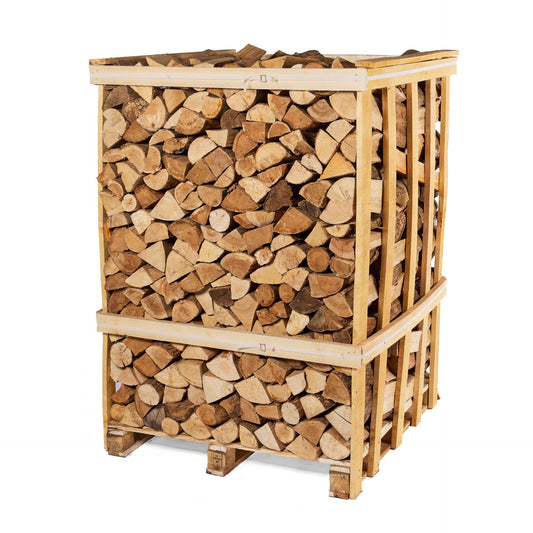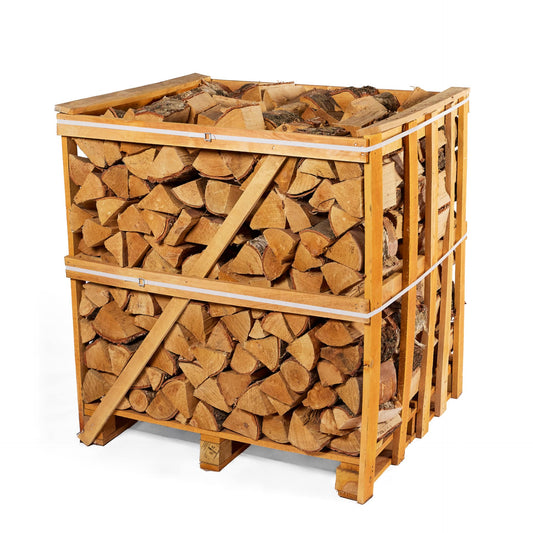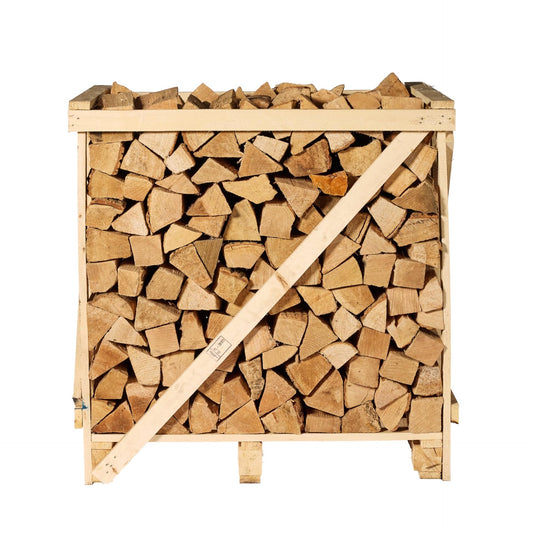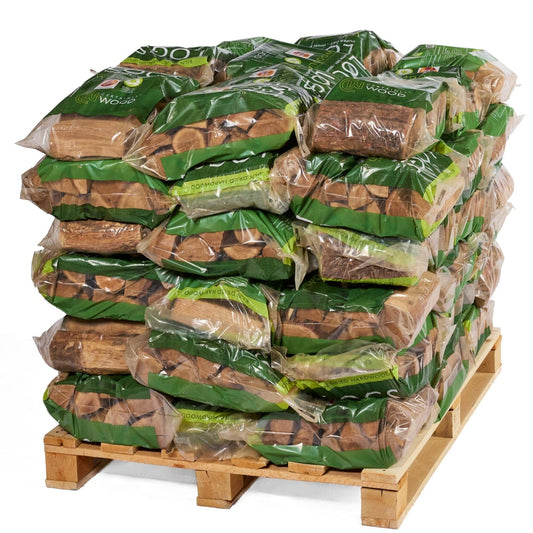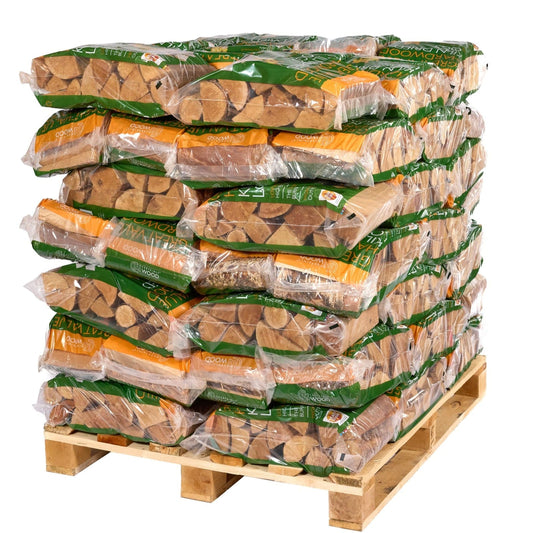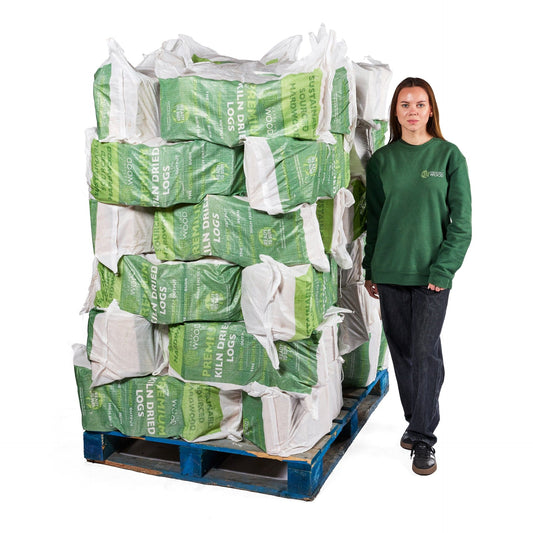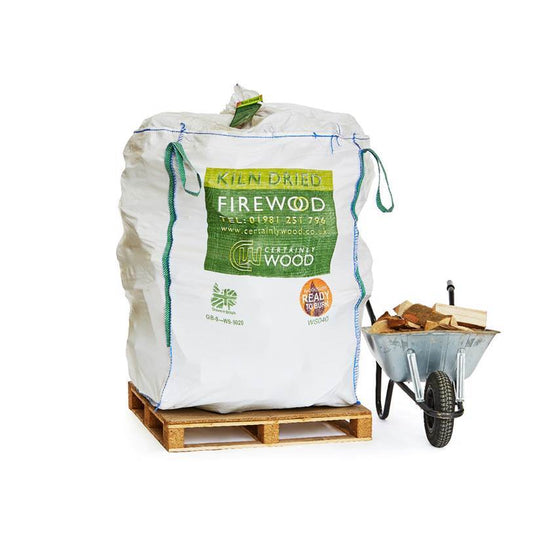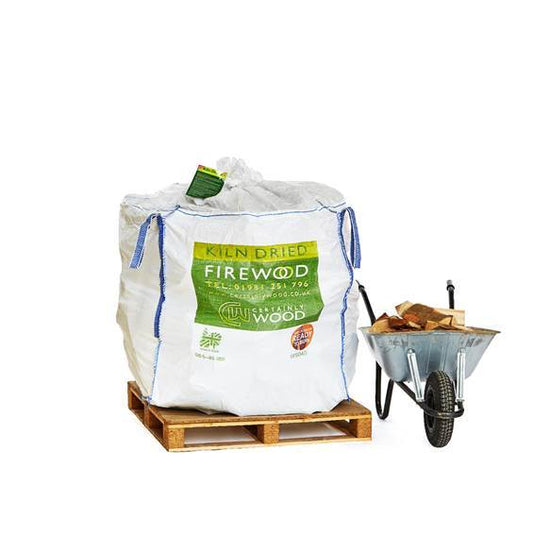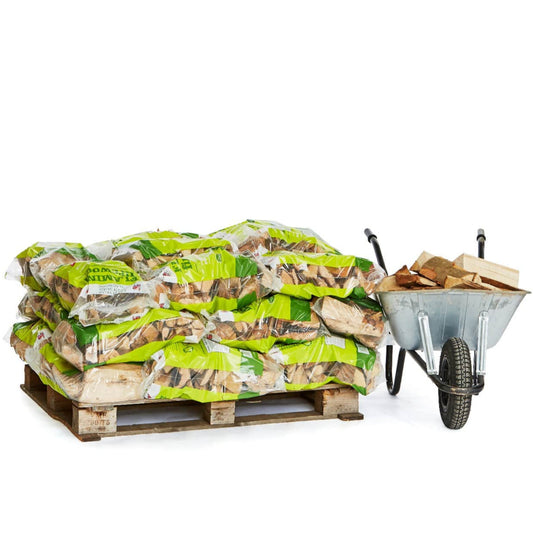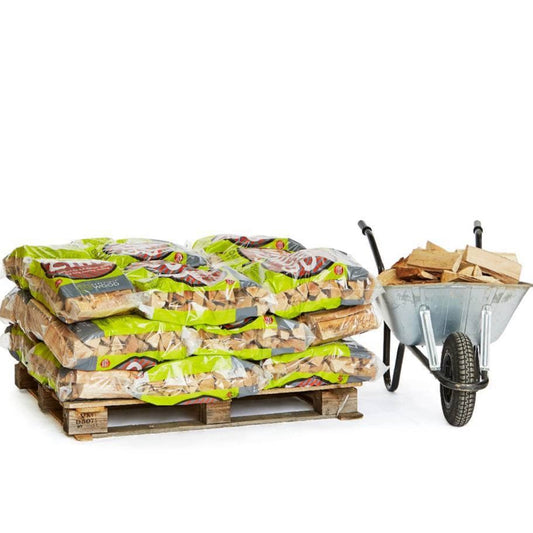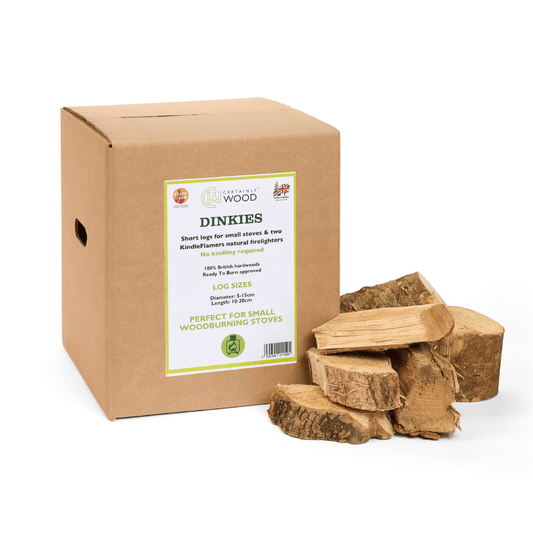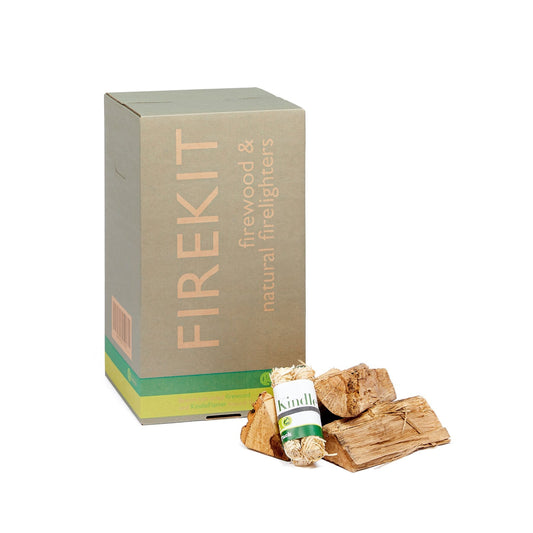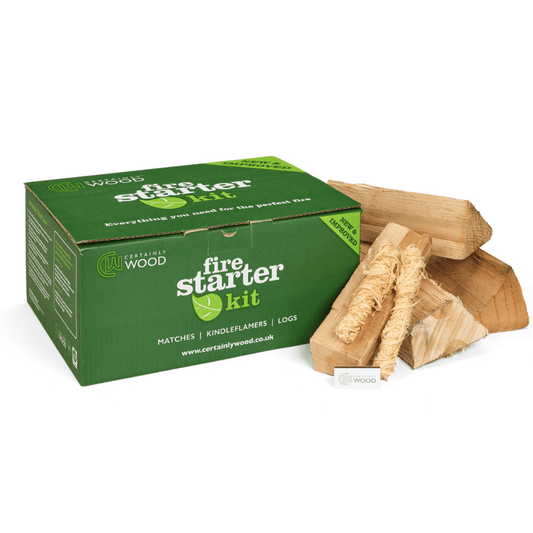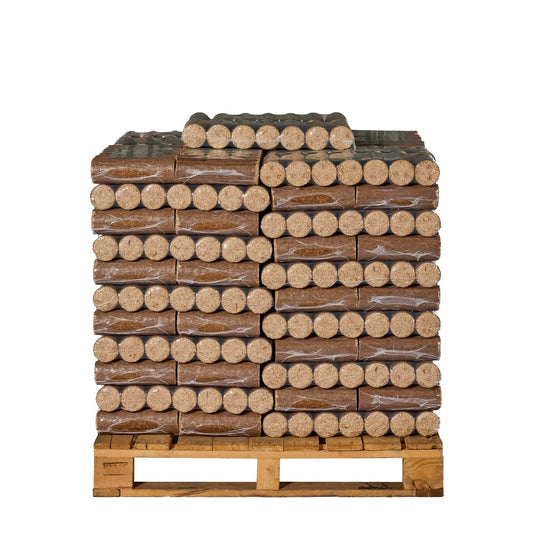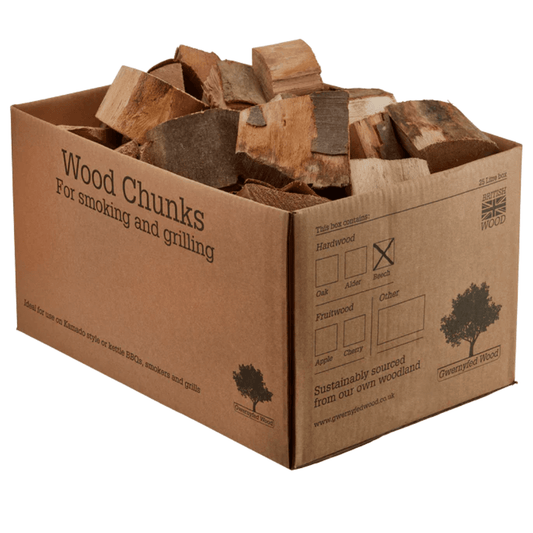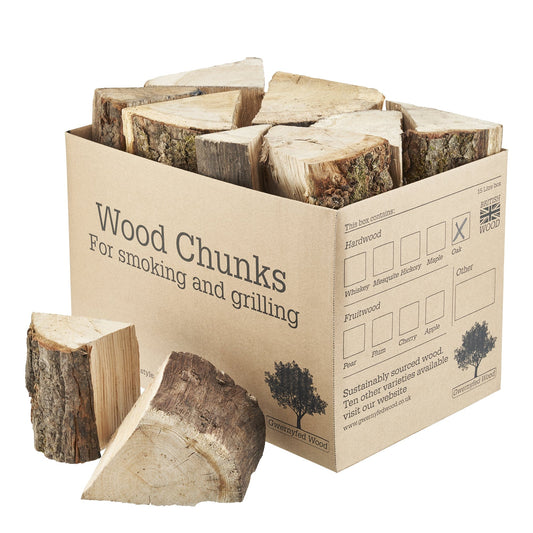Useful Links
What Fuel Is Best for Indoor Woodburners?
Answer - Any firewood under 20% moisture content that is Ready to Burn is approved.
As stove manufacturers recommend, dry firewood with a maximum of 20% moisture content should only be used in your woodburning stove. Look for the trusted HETAS/Woodsure 'Ready to Burn' logo to ensure this. This logo guarantees the logs are below 20% moisture content and is supported by DEFRA to improve fuel quality.

All Certainly Wood kiln dried logs are approved under this scheme, providing a reliable fuel source.
Low moisture content in logs will ensure a clean burn with no blackening of the stove glass or build-up of soot or tar in the chimney or flue. It also means that you will use far less firewood in an efficient stove, making this type of firewood more cost-effective.
Our kiln-dried logs are 'Ready to Burn' so you must ensure they are stored in a cool dry place, either in a log store or garage.
What Fuel Is Best To Burn In An Open Fire?
Answer- Chunky Logs
When burning firewood logs in an open fireplace, it's difficult to control the airflow, which can cause very dry firewood to burn more quickly than desired. To address this, it's best to use "kiln dried chunky logs" with a thicker diameter (10-21cm) for a longer burn time. These logs have a slightly higher moisture content in the centre (average 30%), but the overall moisture content is within the recommended level of below 20%.
It's also important to have smaller logs for starting the fire, so consider a combination of standard and chunky logs when stocking up for winter. Avoid using poorly seasoned firewood, as they may burn slower but can produce a lot of smoke when burned in an open fire, releasing it into the room.
What’s The Best Firewood For Firepits, Chimeneas And Campfires?
Answer- Flaming Firewood
When it comes to outdoor burning, using dry wood is just as important. Whether the appliance is just for sitting around on a summer evening or cooking over, two things are vital—good heat output and minimal smoke. The latter is inevitable when using wet wood, but if you get a good fire going with dry wood, there will barely be any smoke.
We offer Flaming Firewood logs sold in small bags. These are kiln-dried as normal but come in a range of shapes and sizes within each bag and are perfect for these applications.
What Firewood Is Best For Pizza Ovens & Outdoor Cooking?
Answer- Grill & Chill Logs
The best logs to use on your pizza oven should include these characteristics:
- Ready to Burn approved- dried to below 20% moisture content
- Low spitting species- you need a low spitting species like beech
- Thinner cut logs- choosing smaller diameter logs will lead to a quicker fire starting and better heat control when cooking
- Hardwoods - make sure to only use hardwood species to avoid sap residue in your pizza oven
Our Grill & Chill logs tick all the boxes. Grill & Chill logs are approximately 25cm long and 4-10cm wide. The thinner logs help the fire reach optimal cooking heat much faster and make it easier to manage the fire throughout your cooking experience. As our Grill & Chill logs are only made up of one species, you can ensure consistency and low spitting outcomes when using these logs for cooking your food, helping you cook your food evenly and with more control.
Used in top restaurants throughout the UK, our Grill & Chill logs will make your cooking on wood experience easy and leave everyone in awe of your cooking abilities.
What Size Log Do I Need For My Woodburner?
Our standard logs are cut to 25cm (+/- 10%). After consulting with most UK stove manufacturers, we have determined that these logs will fit 99% of UK stoves. The diameter of our standard logs is 5-15cm, measured at the widest point. This specification allows smaller logs to build a good fire base and larger ones for a longer burn.
In addition to the standard 25cm logs, we also offer logs with a length of 35cm and 50cm for larger fires or stoves. The longer logs have a slightly larger diameter than the 25cm logs.
Shop Kiln Dried Logs In Bulk Bags
Shop Kiln Dried Logs In Small Bags
Shop Kiln Dried Logs in Crates
What Is The Ready To Burn Scheme, And Why Is It Important?
The "Ready to Burn" scheme is a certification program in the UK designed to ensure that firewood and solid fuels sold to consumers are dry enough to burn efficiently and with minimal environmental impact. This initiative is part of broader efforts to reduce air pollution and improve air quality, particularly from residential wood burning.
Critical Aspects of the Ready to Burn Scheme:
- Moisture Content: The primary criteria for certification is that the wood must have a moisture content of 20% or less. Dry wood burns more efficiently and cleanly, producing more heat and less smoke and particulates.
- Certification and Labeling: Suppliers who meet the standards can label their products with the "Ready to Burn" logo. This label assures consumers that the wood they purchase meets the necessary moisture content standards.
- Compliance and Enforcement: Suppliers must be certified by an approved certification body, which involves regular testing and audits to ensure ongoing compliance with the scheme's standards.

Why Compliance is Necessary:
- Legal Requirements: As of May 2021, new regulations in the UK mandate that all wood sold in volumes of up to 2 cubic meters must be certified as "Ready to Burn." You must comply with these regulations to legally sell firewood as a supplier or retailer.
- Environmental Impact: Burning wet or unseasoned wood releases more pollutants, including particulate matter (PM2.5) and volatile organic compounds (VOCs). These pollutants can contribute to poor air quality and have significant health impacts. Complying with the scheme, you help reduce these adverse environmental and health effects.
- Consumer Assurance: The "Ready to Burn" label provides assurance that the wood they buy is high quality and will burn efficiently. This means better performance in their stoves or fireplaces and contributes to lower emissions and a cleaner environment.
- Market Competitiveness: Being certified under the "Ready to Burn" scheme can enhance your market reputation and competitiveness. Consumers are increasingly aware of the environmental impact of their choices and may prefer to buy from certified suppliers.
The "Ready to Burn" scheme is a regulatory and environmental initiative to promote cleaner burning practices and improve air quality. Suppliers must comply legally, which helps reduce environmental and health impacts and provides consumers with a reliable standard for purchasing firewood.
What Is Kiln Dried Wood?
Answer- Kiln drying is a process in which firewood is force-dried in large chambers to reduce moisture, which happens much faster than air-drying fresh cut logs.
To comply with the government’s Ready to Burn legislation, and accreditation run by Woodsure, logs must be dried down to below 20% moisture content. It is now (as of Nov 2022) against the law in England (and soon to include Scotland and Wales) to sell firewood that does not meet these standards and carry the relevant accreditation by the supplier and shown on all packaging.
It is important to note that kiln dried logs do not guarantee moisture content below 20% moisture content, but the ‘Ready to Burn’ logo should.To ensure you have properly dried logs, you can test the logs yourself using a moisture meter, splitting the log in the middle to measure the internal reading.
What Moisture Content Should My Firewood Have?
In line with the new Ready to Burn legislation, wood sold in volumes of up to 2m3 must contain less than 20% moisture content. The scheme makes it easier for people to find the cleanest fuels for burning at home. If you purchase and burn firewood above this moisture level, you will not comply with the new Air Quality Regulations 2020.
Seasoned vs Kiln Dried
There is a real difference between kiln dried and seasoned logs and the type you choose can affect how well your fire burns. Put simply, kiln dried logs have been dried in a kiln to a consistent low moisture level, while seasoned logs are air-dried over time. Both can be used on your stove or fireplace, but the performance can vary. That's because of the difference in moisture content. Logs with an optimum moisture content of 15%-20 % ignite more easily, burn more efficiently, and produce less smoke.
At Certainly Wood, we’ve spent years helping you get the very best from your wood-burning experience. Here are the key differences to help you choose the right logs for your needs.
Hardwood vs Softwood
When it comes to choosing the best firewood, hardwood generally performs best for long, efficient burns. Put simply, hardwoods are denser than softwoods, which means they burn hotter and for longer, making them ideal for wood burners and indoor heating. Softwoods, on the other hand, catch alight more quickly and produce a fast, bright flame, which makes them a good option for kindling or quick fires.
Both have their advantages, but hardwood tends to deliver greater heat output and consistency, especially for regular home use.
At Certainly Wood, we’re here to help you choose the right firewood for maximum performance and efficiency. Here are the key differences to help guide your decision.
How Much Firewood Will I Need For A Typical Winter?
A tricky question to answer as it will depend on so many factors:
- The efficiency of your stove
- The size of your property
- How well insulated your property is.
- How often the stove is used
- What the outside temperature is
- How you use your stove – burning on full airflow all the time or on low heat.
However, this is a common question we get asked, so here’s some guidance to give you some idea. Assuming you use the most efficient fuel – kiln dried- in an average year, you will likely use 3-4 cubic metres of firewood. Remember that you will use significantly more wood if it is not dry because it provides far less heat energy – up to twice as much.
Our extra-large crates are a great bulk option for keeping stocked up over winter. Shop crates.
How Do I Store Kiln Dried Logs?
Always store the firewood under cover and in a well-ventilated area. We always recommend that the bulk bags are decanted, however, if you are lucky enough to be able to get the bag directly into your garage, then it will be fine left in the bag. If outside, you should really cover the bag as if water gets in, then the logs may go mouldy as there will not be enough airflow. Don’t forget our bulk bags are only showerproof and not waterproof. The small bags have little breathing holes and are also not waterproof. Again, best stored under cover.
What Is The Most Cost-Effective Way Of Buying Kiln Dried Logs?
The Extra-Large Crate is the most cost-effective way to buy kiln dried logs from Certainly Wood. When comparing price per cubic metre, it offers the best value for money across the range. Each crate is neatly stacked for maximum volume and efficiency, meaning you're not paying for air gaps or loose fill. Ideal for regular burners or winter stock-ups, the Extra-Large Crate ensures you get more premium-quality, Ready to Burn certified logs for less.
Firewood Volumes
When it comes to buying firewood, understanding the difference between stacked and loose filled volumes is essential, especially if you're trying to compare suppliers or ensure you’re getting good value. At Certainly Wood, we believe in complete transparency, and that includes helping our customers make informed decisions when it comes to volume, pricing, and how our firewood is packed.
I Want To Try The Logs Out Before Buying In Bulk. Can I Do That?
Answer—Yes, Certainly. Wood starter kits allow you to try our kiln-dried logs and KindleFlamers before committing to buying bulk.
We understand buying kiln-dried logs in bulk is a big commitment; that's why we offer our Certainly Wood Starter kit, which contains everything you need for the perfect fire. This kit allows you to try our products before buying large quantities. It contains 100% quality-assured British kiln-dried firewood, two KindleFlamers (kindling-less firelighters), and a handy box of matches. Our starter kits cost £10 per box with FREE delivery and come with handy instructions on how to light your fire.

